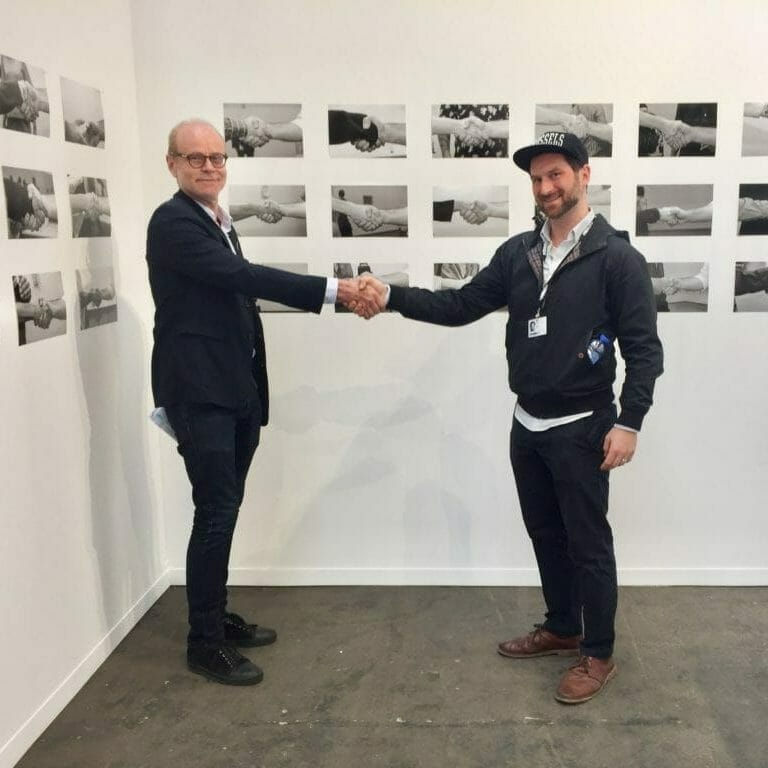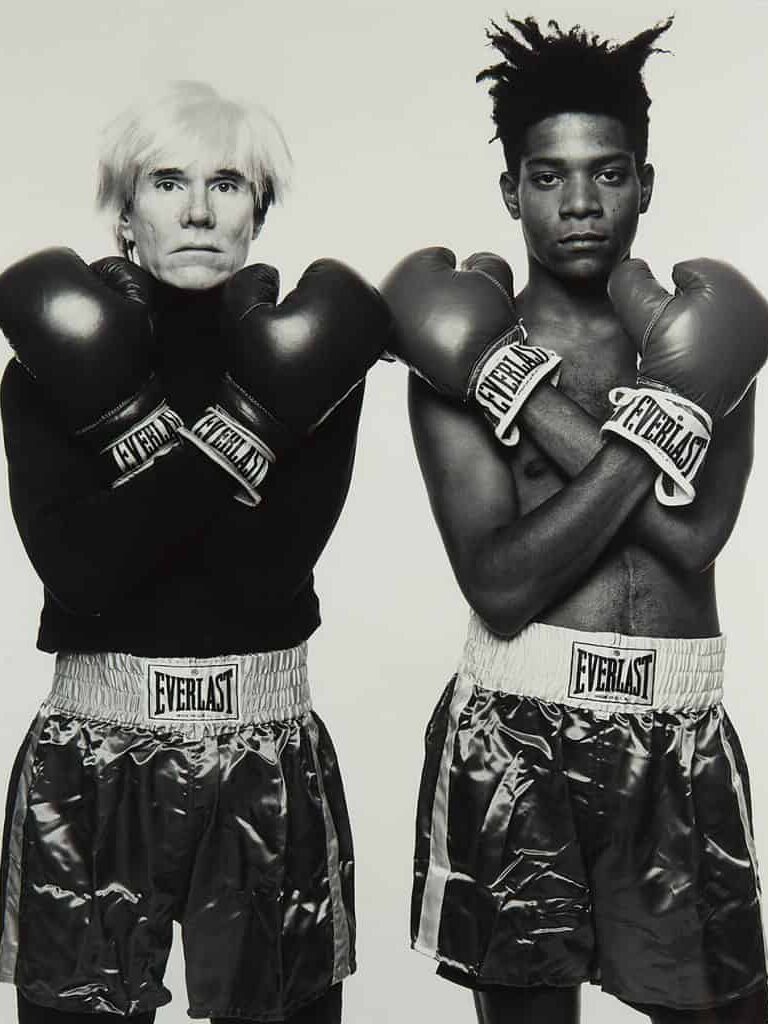
Di Tian
(b. 1999, CN)
Artists thrive on connections. From collectors to galleries, dealers to critics, and peers to press, each contact holds potential for various opportunities. However, without a systematic approach to managing these connections, valuable interactions can slip through the cracks. That’s where your central contact list—an utmost important document for all artists—comes into play. By consolidating all your contacts into a single document, you set the stage for enhanced communication and networking efficiency.
Various online platforms would make you believe that you need expensive software with a database for all your contacts and various automatizations to send out emails. In reality, artists need to focus on the quality of the contacts, not the quantity, as well as on the quality of the interaction with those contacts, and not the quantity. As a result, a large database or being able to send out thousands of newsletters is not what artists need. Instead, we need to be able to send more personal emails to a select group of contacts, accompanied by possibly their Instagram account for some social media networking or their home address to send private catalogs and publications, et cetera.
As a result, a single document as a central contact list, grouping your contacts into relevant groups, is more than enough. Throughout this article, we’ll explain how to create such a central contact list and, more importantly, how to use it. We will also refer to our digital download, the CAI Central Contact List, an easy-to-use and ready-for-use template to save you some time.
When it comes to setting up your central contact list—or what our template includes—it is advised to create five different groups or lists: (i) collectors; (ii) galleries, dealers & art advisors; (iii) press, curators & critics; (iv) artist colleagues; (v) friends & family. These five different segments will consist of varying information and, in a later stage, will be used for different purposes, as we’ll argue along the way. First, let’s discuss these five segments and what information you should pay attention to when adding your contacts to your central contact list.
The first segment is arguably one of the most important types of contacts for the majority of artists: collectors. They provide financial support by purchasing your art, they are your biggest fans and often act as ambassadors for your career, promoting your art with fellow collectors and other galleries. By doing so, they can function as important catalysts for a healthy art career, both in the short-term and in the long run.

It is easier to keep your current collectors happy than to find new ones. Therefore, a personal email marketing strategy is advised to build an ongoing relationship and regular contact. This is exactly the reason why they deserve a category on their own. Don’t send them general invitations or corporate-feeling newsletters. Instead, give them early access to the catalogs of your upcoming shows, invite them in a more personal manner, thank them, and don’t be too focused on generating new sales. Focus on your relationship with them instead.
Your collector list does not only consist of clients from the past but also of potential clients. Add every person who has inquired about your work along the way to this list, and write down for which work they have inquired. If they didn’t proceed to purchase an artwork back then, perhaps they will in the future if you keep them in the loop. This is exactly why we recommend using a catalog with available works on request via your website instead of using a webshop—as we have discussed more extensively in our article on How To Sell Art With Your Website. These leads can be transformed into sales in the foreseeable future.
It is advised to write down as much relevant information as possible for this segment, for instance, which work they have purchased or inquired for, what their Instagram account is to include them regularly in your Instagram networking strategy, or some additional notes that might be useful for some small talk or a more personal segment in your email correspondence—for instance, that they have two kids and a dog, including their names. If you are unable to fill in every single column, it is okay to leave some of them empty.
This results in the following columns, as provided in the CAI Central Contact List Template:
Up next, it is also important to track and maintain all your professional contacts and art business partners that will help you to generate more sales and grow your career and resume, in particular, galleries, art dealers, and—a less prominent group of people—art advisors. Here at CAI—and as discussed more extensively in our article on the different Career Paths for Artists—we pursue and advise success in the highest realms of the world, including gallery representation. Galleries and dealers act as representatives for artists, advocating their work in the art market and promoting the artist to collectors, the press, and institutions. They increase the visibility and credibility of your work by organizing exhibitions and taking care of all the marketing aspects that we are not allowed to do, enabling artists to make a living while focusing on being an artist and creating art.
All too often, artists forget galleries in their email marketing strategy or in their contact list entirely. They are too focused on finding collectors and generating sales for short-term income to consider the more important long-term vision and strategy required for a prospering career as an artist. This is also exemplified by other more expensive contact management solutions provided by other online platforms, where nobody is discussing galleries in this context.

It is safe to say that this segment of your contact list requires a different approach once more. One might think that we are going to use this list to send out portfolios to as many galleries as possible, hoping to get an exhibition somewhere. However, as we have discussed more extensively in our articles How To Get Discovered as an Artist and 8 Common Mistakes Artists Make, this is a strategy that is frowned upon in the art world and is highly ineffective, with a conversion rate of almost 0%, or in most cases, effectively 0%. Instead, we are going to focus on a small but powerful selection of galleries, consisting of galleries we have worked with in the past, galleries that we have visited in person and met someone who works there (preferably the director), and galleries that we are targeting or are interested in you, but you haven’t engaged with so far—for instance, galleries that are following you on Instagram.
Write these things down in the ‘additional notes’ column for those contacts in your list so that you are aware of this and can adapt your email or networking strategy using this information. Don’t send out emails out of the blue to galleries that you haven’t worked with in the past or don’t know you well enough. We’ll have to do a bit more networking work with them first, via Instagram and in real life. The other galleries, the ones that you have worked with and the ones that you are in contact with, should also receive various updates on new projects, shows, or news—for instance, a selection for an art award, an upcoming solo exhibition at another gallery, or a private view of a series of new works. Aim to do this two of the four times per year, but not more. The more you remind them of your activities and possibly new successes and achievements, the more likely they are to invite you to an(other) exhibition.
This results in the following columns, as provided in the CAI Central Contact List Template:
Up next, we have press, curators & critics, consisting of individuals who write for magazines, institutions, and art platforms, up to the general addresses of those entities. They can give your work that extra exposure it needs, as a result, we want to keep them in the loop as well and integrate them in both our email marketing and Instagram networking. As with the previous section, we do not want to create a massive list of email addresses of as many critics, magazines, and online platforms to send them our newsletter without their permission. This is not only annoying, frowned upon, and even illegal; it is also one of the most inefficient strategies.

So what does work? First and foremost, be aware that becoming a full-time art critic or art curator is often as difficult as becoming a full-time artist. They are also in search of new contacts, new work, and new things to write about—so they are open to meeting artists and building synergetic personal relationships with them. You can find them by simply looking below the title of a feature in a local magazine or online platform where they mention the author. Go for critics who are in your niche or artistic discipline and preferably of a similar age. Get in touch with these passionate individuals via Instagram networking, and at a later stage, you can add them to your email marketing strategy.
For larger online art platforms and magazines, try to identify a selection of local and perhaps also international entities that accept submissions. Write them down in this segment and contact them, following their submission guidelines very closely instead of sending out an unsolicited submission or newsletter in bulk. Repeat this process with every new exhibition to gradually increase your online presence.
This results in the following columns, as provided in the CAI Central Contact List Template:
When artists are contemplating their networking and communication strategies, they most often think predominantly of who they need to make money; collectors and galleries. However, both collectors and galleries are already being overwhelmed by other artists who are thinking the same way. Even more, it is difficult to connect with someone if we are not on the same foot. The statistical reality is that there are a lot more artists than there are collectors or galleries. Artists need them more than they need us—despite what others might argue.

The main segment of the art world that is on the same foot as artists is other artists. In fact, other artists should be the first contacts to engage with before you aim to get in touch with galleries and collectors. Even more, very often, other artists are your entry ticket or a stepping stone to enter the networks surrounding galleries and collectors, enabling you to get in touch with them in a natural manner instead of having to cold call them or write unsolicited emails and other acts of unaccepted self-promotion. Other artists are people you can learn from, collaborate with, or grow with. They can help you, and you can help them. By supporting each other, a synergetic artist-artist relationship can be one of the most powerful and impelling forces for your career. They can vouch for you, introduce you to a collector, critic, or gallery director, or suggest you be included in one of their upcoming group exhibitions. Et cetera.
Aim to network and engage with artists that you genuinely like, both in terms of their art and personality. Trying to network with blue-chip artists will be a dramatically unsuccessful endeavor, and collaborating with artists who are failing or outside of the art world won’t help you either. Go for artists who are within your reach and slightly above you career-wise.
This results in the following columns, as provided in the CAI Central Contact List Template:
We conclude with our final group of contacts: family and friends. This is arguably the least powerful segment of your contact list, but it is definitely worth keeping track of—especially during your first steps as an artist. Always invite all your family and friends to exhibition openings or open studio days. The more, the merrier. Although it is unlikely that they will provide you with leads for top-notch collectors, new exhibition opportunities, and more, their presence and support can be a great start and lift spirits—yours and those of the collectors who are dropping by.
Even more, there might be a family member or a friend who is interested in art, or is wealthy, or knows someone who is interested in art and is wealthy. As a result, you simply have to include them as well in your general email marketing, but don’t spend too much time on personalizing for this segment.
This results in the following columns, as provided in the CAI Central Contact List Template:
To save some time setting up this central contact list and to avoid making any mistakes, please consider purchasing our CAI Central Contact List Template here. The tool provides additional instructions on how to use your contact list, and by doing so, you will also be supporting our free tutorials and informative articles. The template is priced at the most modest price—approximately the price of a coffee. Thank you in advance. For more useful career tools to professionalize your art business, make sure to consult our overview page with Career Tools for Artists next.
Last Updated on April 27, 2024

(b. 1999, CN)

Revisiting Art’s Instinctual Power